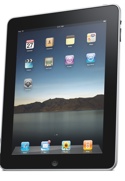Over the next few years multi-core processors are expected to play an important role in enabling high-performance mobile computing at low-power consumption, according to a new report from Strategy Analytics (http://www.strategyanalytics.com). “AppleInsider” (http://www.appleinsider.com) has reported that the iPad 2 will will pack a new version of Apple’s custom A4 chip, with dual, faster graphics cores.
“Apple’s next custom System on a Chip is expected to jump from the SGX535 (which has been used since the iPhone 3GS) to the new SGX543 graphics and video core, which is said to offer around twice the processing power at the same clock speed,” says “AppleInsider.” “The new graphics core also supports OpenCL, used to offload general purpose computing tasks on the GPU for fast execution
The Strategy Analytics research group says Samsung, Nvidia, Qualcomm, ST-Ericsson, Texas Instruments, Marvell, Renesas and Broadcom are well-positioned to capture market share in the smartphone multi-core applications processor market. According to Strategy Analytics report, multi-core processors are becoming a key differentiating factor for handset manufacturers and silicon vendors from both a marketing and technical perspective.
Additionally, the multi-core applications processor market will be dominated by stand-alone applications processor vendors in the near-term. Qualcomm and ST-Ericsson will be the only vendors in 2011 offering multi-core applications processors with integrated basebands.
“Strategy Analytics estimates that multi-core processor penetration in smartphones will rise from 15% in 2011 to 45% in 2015,” says Stuart Robinson, director of the Strategy Analytics Handset Component Technologies. “ARM’s Cortex-A9, Cortex-A5 and Cortex-A15 and Intel’s x86 architectures will contribute to the proliferation of multi-core processors in smartphones. We estimate Samsung will lead the smartphone multi-core applications processor market in 2011, followed by Qualcomm, Nvidia, ST-Ericsson and Texas Instruments.”
The research group’s analysts believe that multi-core processors will re-ignite the battle between the stand-alone and baseband-integrated applications processor vendors in 2011, added Sravan Kundojjala, senior analyst at Strategy Analytics. “The baseband-integrated multi-core applications processors will account for about one-third of total smartphone multi-core applications processor shipments in 2011, with potential for higher share in the future,” he says. “By contrast, the market for single-core apps processors is now dominated by baseband-integrated products.”



